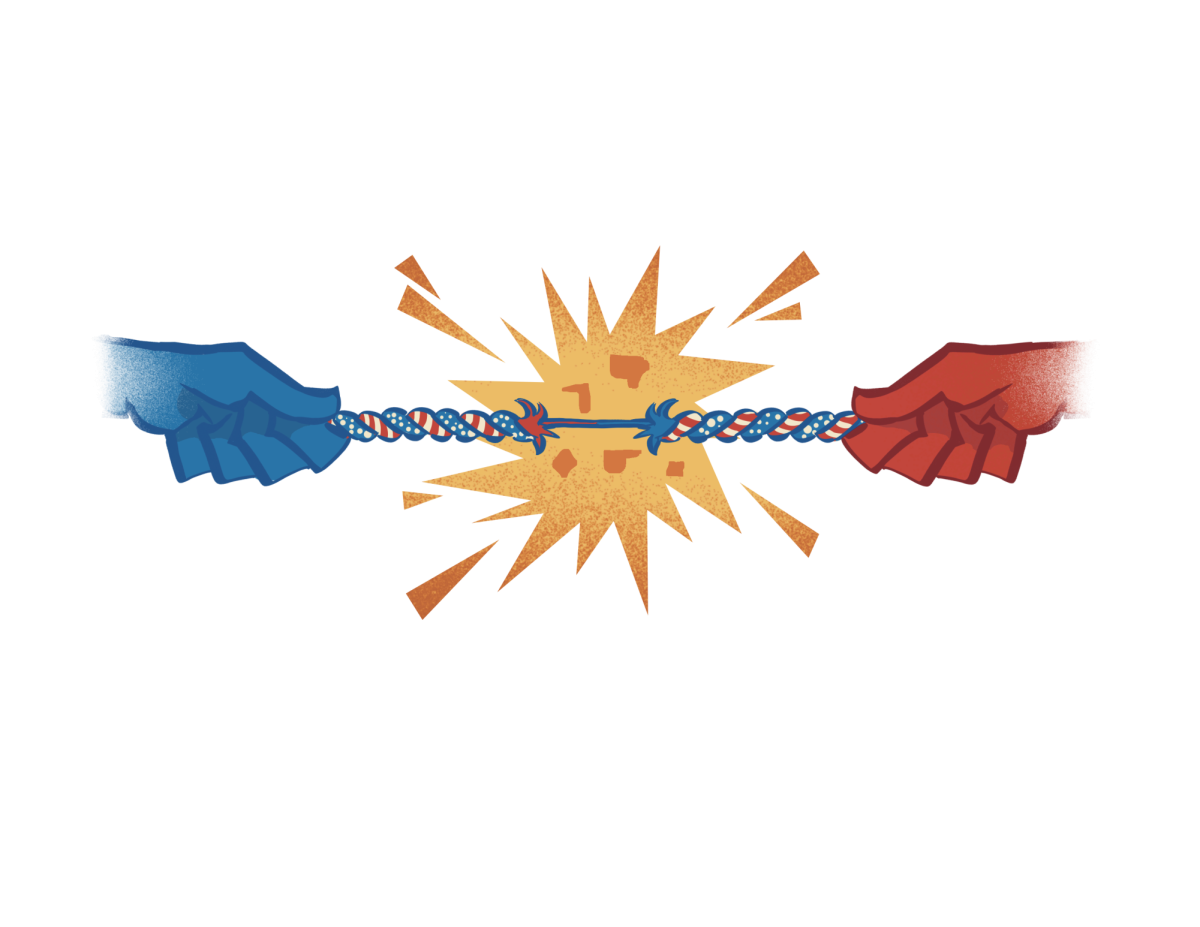
Ana Sophia Bustamante Bravo
When digesting online posts in today’s world of infinite economic, social and political issues which divide American society into two so-distinct sects, it may seem at first glance that the opposite viewpoints expressed serve entirely unrelated interests and purposes. That could not be further from the truth. When the Senate Republicans’ X account claims that Democratic priorities lie in the continuation of “funding electric vehicles in Vietnam” and the House Democrats’ account says the “Republican Rip Off” aims to remove “food assistance for children to pay for tax cuts for billionaires,” these seemingly at-odds groups attempt to advance the very same goal — dividing the populace. Today, each party conspires to polarize the national populace at the people’s expense so the groups can promote selfish organizational objectives. As a majority of media sources, relevant speakers,and government facets dive deeper into the darkness of division, Americans must realize that only understanding and compassion can repair the greater societal rift and pave a brighter future.
When President Jimmy Carter signed the bill which established the Department of Education as a Cabinet-level department in 1979, he sought to confront systemic inequality in education and support the availability of equal opportunities across the United States. Despite continuous debate regarding its existence and budget, the office has been thoroughly utilized by both Republican and Democrat presidential administrations which emphasized the importance of equality in schools across the nation. Notably, George W. Bush signed the No Child Left Behind Act, expanding Title I provisions to help aid disadvantaged students. Barack Obama later signed its successor and replacement, the Every Student Succeeds Act. Both bills passed the chambers of Congress by overwhelming majorities and with bipartisan support. The DOE was the main conduit through which these acts were enforced.
However, once Republican presidential candidates realized that claiming they would eliminate the DOE could rile up supporters and anger Democrats, the office became a political tool with which to divide Americans. Through the use of buzzwords and rhetoric to electrify an audience, candidates like President Donald Trump convinced supporters that the DOE would be quickly dismantled to promote efficiency in government and avoid leftist indoctrination.
The problem: it can’t happen. There is not enough support in Congress to eliminate the department. During the election, the Department of Education became nothing more than a tool and divisive talking point to spread discord among conservatives and liberals so no agreement or compromise could be reached along the way. Now, there is no middle ground.
Americans cannot meet in the middle when the top officials of their nation provide them with options which fundamentally contradict each other. Parties and politicians require the division and radicalization of American voters to grow and loyalize their voterbase to maximize their chances of success in the future. To them, moderates signify a risk which jeopardize their job security.
To ensure that party members remain loyal, they must be drip-fed party rhetoric. Luckily for the two parties, a world of subscription streaming, personalized feeds and the 24-hour news cycle has revolutionized the way that our society receives its updates on world events. As print media and the tradition of reading the paper while sipping a cup of coffee fade deeper and deeper into obscurity, targeted news broadcasts and ever-learning algorithms capitalize more than ever on the innate human tendency on groupthink. MSNBC, CNN, Fox and Newsmax hardly can be classified as news, having devolved into entertainment networks masquerading as factual broadcasts. These channels spout party rhetoric so viewers can be sure to tune in and hear their own opinions brought to them in a repackaged echo chamber. For the networks, offering disparate viewpoints in their programming would risk the viewer clicking away to watch Family Guy instead of their “news.” However, these networks are barely worth mentioning in comparison to the behemoth scope of digital news, which becomes even more of an echo chamber as social media users are encouraged to interact and engage in niche groups which do nothing but back up the preconceived notions that Americans hold against each other. The parties and the media form together a vicious cycle from which it is barely possible to hear out — let alone begin to consider — opposing viewpoints.
Despite the cultural strife which the media and parties continue to promote, human connection is still the strongest healing force for the American public. Even though political agendas seem to contradict so heavily, individual compassion is how to shrink the divide which superficially separates left and right. In discussions of these core issues, so much value can come from empathy and the realization that both sides share some integral key ideals. According to a 2023 University of Chicago study, more than 85% of both Republicans and Democrats value tenets like government accountability, rule of law, representative government, respect and compassion. More broadly, though, opposing Americans must realize that both sides of every debate have a goal: to create a brighter future.
However, through their careful manipulation, the parties and media have still cultivated a deep distrust within the American public against each other. As the next generation acquires their right to vote and becomes engrained in the political process, they must cast away this distrust and embrace compassion. Distrust is what keeps America divided. Distrust is what fosters stagnation. Compassion, especially between those with the most disparate ideological differences, is what leads to the slow building of trust. From that carefully developed trust, eventual compromise can be found, and through compromise, real progress will be achieved.